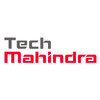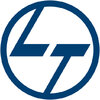Filter interviews by
Pumo Technovation India Embedded Engineer Interview Questions and Answers
Pumo Technovation India Embedded Engineer Interview Experiences
1 interview found
I applied via Recruitment Consulltant and was interviewed in Apr 2024. There were 2 interview rounds.
Its is a easy question where everyone can answer if they know the basics
(4 Questions)
- Q1. They asked about micro controllers
- Q2. Formula for frequency and how to calculate frequency in 8051
- Ans.
Frequency in 8051 is calculated using the formula: Freq = 1 / (2 * T * 12 * (65536 - TH0 + TL0))
Frequency can be calculated by using the formula: Freq = 1 / (2 * T * 12 * (65536 - TH0 + TL0))
T is the crystal oscillator period in seconds
TH0 and TL0 are the values stored in Timer 0 registers
Example: If T = 1/12 MHz, TH0 = 0x00, TL0 = 0xFF, then Freq = 1 / (2 * (1/12e6) * 12 * (65536 - 0x00FF))
- Q3. Why they call port 0 as no power port
- Ans.
Port 0 is called no power port because it does not have any power supply connected to it.
Port 0 is typically used for communication purposes and does not provide power to connected devices.
It is commonly found in microcontrollers and is designated for data transfer rather than power supply.
Devices connected to port 0 may need to be powered separately to function properly.
- Q4. How to calculate voltage
- Ans.
Voltage can be calculated using Ohm's Law, which states V = I * R.
Use Ohm's Law formula V = I * R, where V is voltage, I is current, and R is resistance.
Measure the current flowing through the circuit using an ammeter.
Measure the resistance of the circuit using a multimeter.
Multiply the current by the resistance to calculate the voltage.
For example, if the current is 2A and the resistance is 5 ohms, the voltage would b
Interview Preparation Tips
Skills evaluated in this interview
Top trending discussions






Interview questions from similar companies

I applied via Campus Placement and was interviewed in Jan 2021. There were 3 interview rounds.
Interview Questionnaire
1 Question
- Q1. Swap two number with and without temporary variable
- Ans.
Swap two numbers with and without temporary variable
Without temporary variable: Use addition and subtraction
With temporary variable: Use a third variable to store the value of one of the numbers
Example without temporary variable: a=5, b=7; a=a+b; b=a-b; a=a-b;
Example with temporary variable: a=5, b=7; temp=a; a=b; b=temp;
Interview Preparation Tips
Skills evaluated in this interview

I applied via Naukri.com and was interviewed in Oct 2020. There was 1 interview round.
Interview Questionnaire
3 Questions
- Q1. What is second level cache?How to implement second level cache?How to optimize sql query?what are solid principles?
- Ans.
Second level cache is a caching mechanism used to improve performance by storing frequently accessed data in memory.
Second level cache is implemented at the application level and can be configured using frameworks like Hibernate.
To optimize SQL queries, one can use indexes, avoid using SELECT *, and use JOINs instead of subqueries.
SOLID principles are a set of design principles for writing maintainable and scalable cod...
- Q2. Mostly FAQ but somewhat in depth?
- Q3. How to deploy application in aws?
- Ans.
To deploy an application in AWS, you need to create an EC2 instance, configure security groups, install necessary software, and upload your application code.
Create an EC2 instance in the desired region and select the appropriate instance type
Configure security groups to allow traffic to and from the instance
Install necessary software and dependencies on the instance
Upload your application code to the instance
Start the ...
Interview Preparation Tips
Skills evaluated in this interview

I applied via Company Website and was interviewed before Aug 2020. There were 4 interview rounds.
Interview Questionnaire
1 Question
- Q1. What is my longterm and short-term goals.
- Ans. My short-term is to become an expert in solving queries And long term is to become valuable employee in an organisation and managing a team, also helping new recruits to learn the work.
Interview Preparation Tips

I applied via Campus Placement and was interviewed in Dec 2020. There were 4 interview rounds.
Interview Questionnaire
2 Questions
- Q1. THERE WERE 4 ROUNDS.1-APTITUDE 2-PSEUDO TEST 2-TECHNICAL INTERVIEW 4-HR ROUND
- Q2. 1ST ROUND WAS VERY SIMPLE 2ND WAS LITTLE COMPLEX 3RD&4TH ROUND WAS VERY SIMPLE
Interview Preparation Tips

I applied via Recruitment Consulltant and was interviewed before Jun 2021. There was 1 interview round.
(2 Questions)
- Q1. Where do we use BigInteger in java ?
- Ans.
BigInteger is used for mathematical operations involving very large integers in Java.
BigInteger is used when the range of values supported by primitive data types like int and long is not sufficient.
It is commonly used in cryptography and security applications.
It provides methods for arithmetic, bitwise, and logical operations on large integers.
Example: calculating factorial of a large number, generating large prime nu
- Q2. Merge Sort Algo code in java
- Ans.
Merge Sort Algo code in java
Divide the array into two halves
Recursively sort the two halves
Merge the sorted halves
Time complexity: O(n log n)
Interview Preparation Tips
- Core Java
- DSA
Skills evaluated in this interview

Interview Questionnaire
1 Question
- Q1. Java collection
Interview Preparation Tips

Interview Questionnaire
1 Question
- Q1. Indexes, union and union all, data warehousing questions

I applied via Naukri.com and was interviewed in Aug 2020. There was 1 interview round.
Interview Questionnaire
2 Questions
- Q1. Interfaces
- Q2. Oop concepts
Interview Preparation Tips

I applied via Walk-in and was interviewed in Aug 2020. There were 4 interview rounds.
Interview Questionnaire
1 Question
- Q1. They ask only basics of programming languages which are mentioned in resume
Interview Preparation Tips
Pumo Technovation India Interview FAQs
Tell us how to improve this page.
Interview Questions for Popular Designations
- Embedded Software Engineer Interview Questions
- Embedded Developer Interview Questions
- Embedded Firmware Engineer Interview Questions
- Embedded Software Developer Interview Questions
- Embedded Systems Engineer Interview Questions
- Senior Embedded Engineer Interview Questions
- Junior Embedded Engineer Interview Questions
- Embedded Trainee Engineer Interview Questions
- Show more
Pumo Technovation India Embedded Engineer Interview Process
based on 1 interview
Interview experience
Embedded Engineer Interview Questions from Similar Companies
Pumo Technovation India Embedded Engineer Reviews and Ratings
based on 2 reviews
Rating in categories
|
Design Engineer
61
salaries
| ₹1.8 L/yr - ₹4.2 L/yr |
|
Junior Design Engineer
15
salaries
| ₹1.8 L/yr - ₹3.2 L/yr |
|
Embedded Engineer
9
salaries
| ₹2 L/yr - ₹3 L/yr |
|
Software Engineer
7
salaries
| ₹2 L/yr - ₹4 L/yr |
|
Software Trainee
7
salaries
| ₹2 L/yr - ₹3 L/yr |

TCS

Accenture

Wipro

Cognizant
- Home >
- Interviews >
- Pumo Technovation India Interview Questions >
- Pumo Technovation India Embedded Engineer Interview Questions








